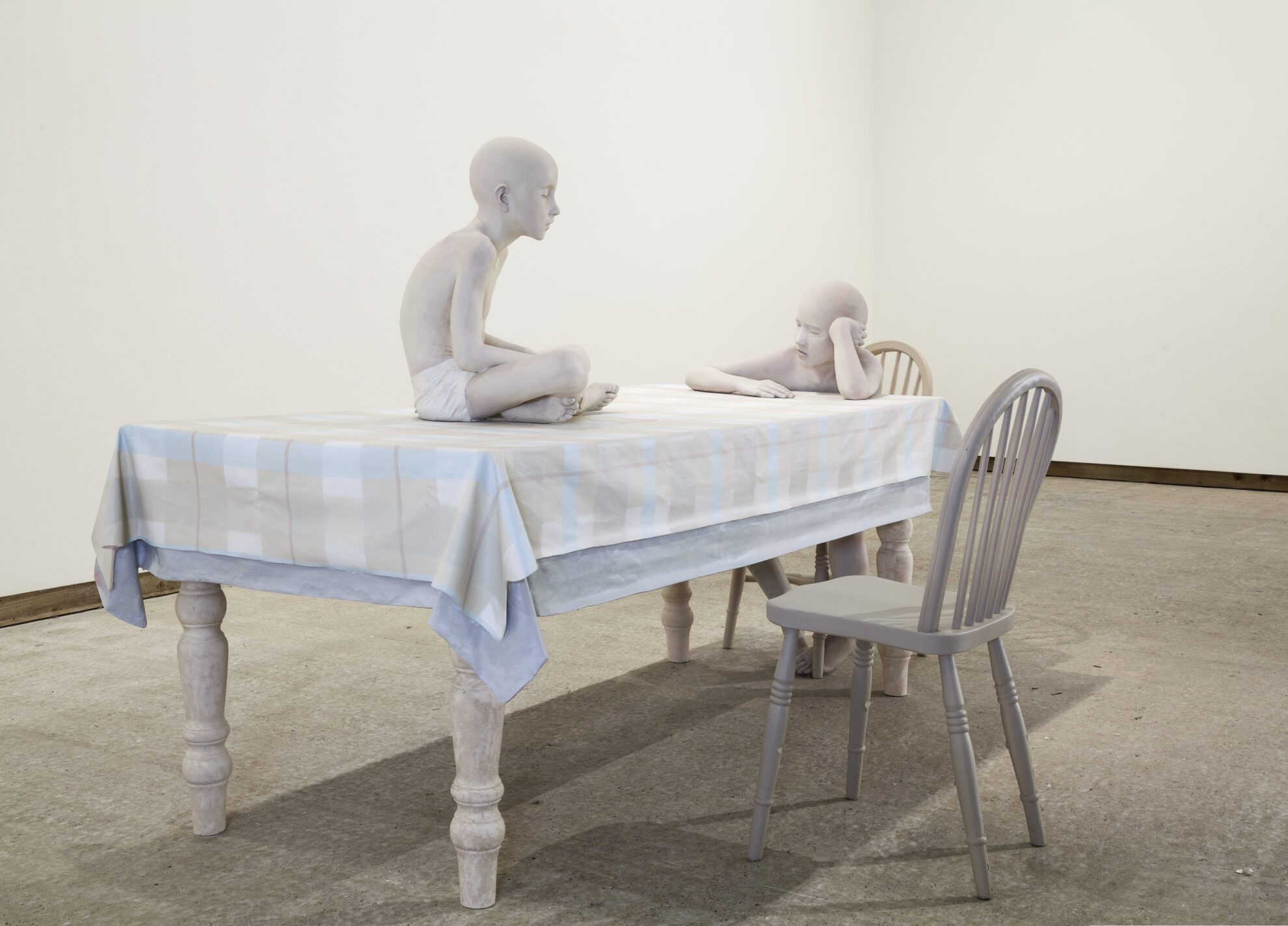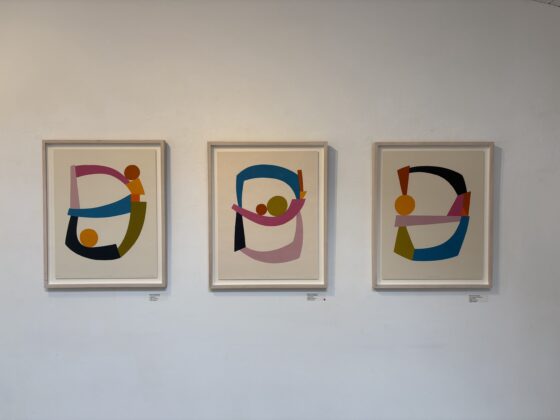JOANNE LAWS INTERVIEWS DAPHNE WRIGHT AHEAD OF HER SOLO EXHIBITION AT THE ASHMOLEAN MUSEUM.
Joanne Laws: We both studied in Sligo RTC (now Atlantic Technological University). I studied Fine Art in the late-90s, during an inspiring period for female Irish sculptors. Was there a sense of optimism at this time, or did momentum happen against the odds?
Daphne Wright: Well, everybody left in the 80s – the recession was brutal. I left Ireland in 1989. In the 90s, I just remember going from fellowship to fellowship and residency to residency, in order to sustain my practice. I was a fellow in Cheltenham, a Henry Moore fellow in Manchester, and spent a year in the British School at Rome. During my education in Sligo in the early 80s, really strong women sculptors were constantly being pointed out to us; I was learning all the time through talking and conversation. The teaching staff in Sligo at the time included Seán Larkin, Seán McSweeney, Fred Conlon, Con Lynch, Nuala Maloney, Ruairí Ó Cuív, Seán O’Reilly, and John O’Leary. There was also Robert Stewart and Peter Charney – he was Australian and came with a completely different viewpoint. I studied sculpture and ceramics, but we were such a small year group that we were all friendly with each other.
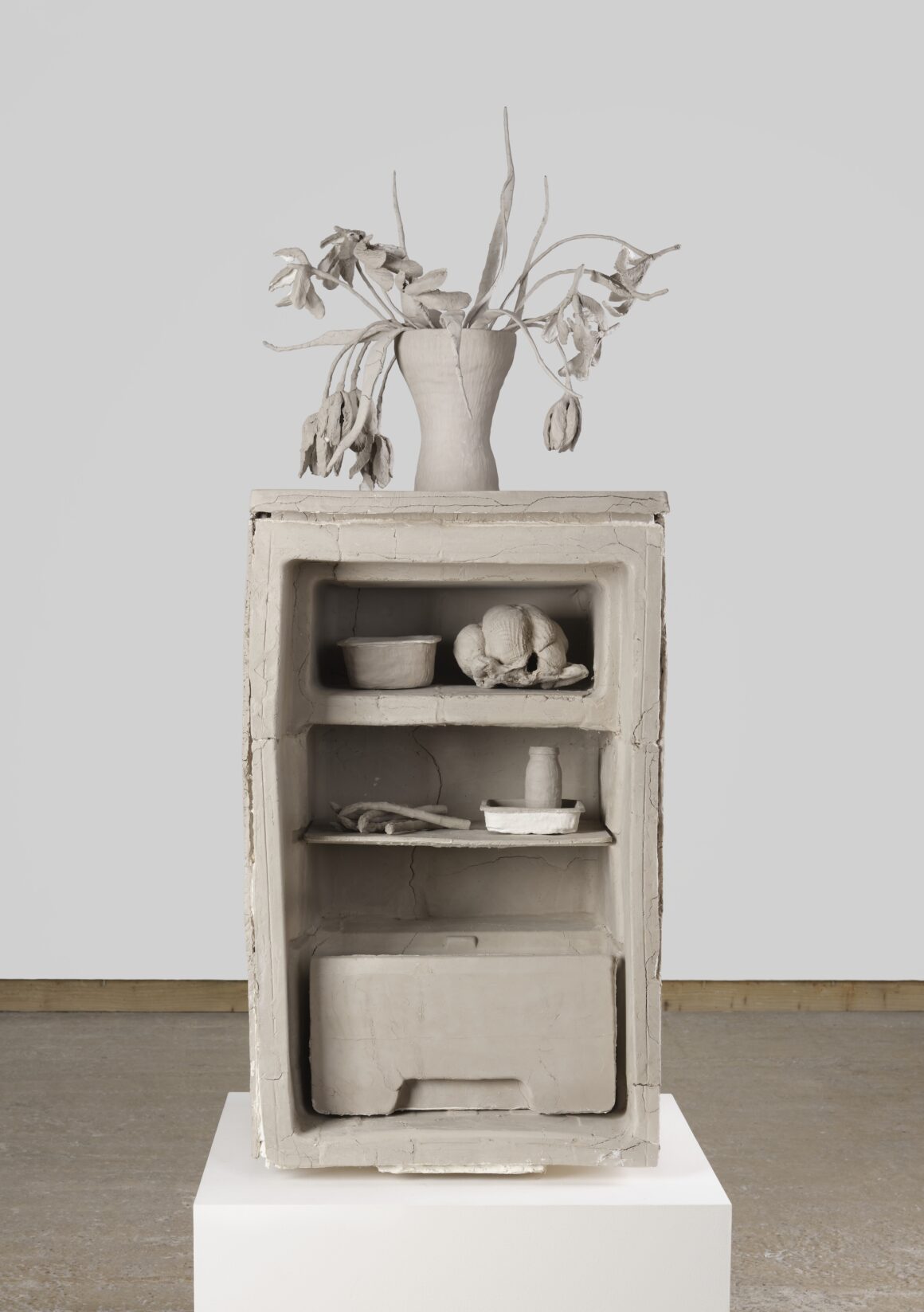
JL: Now that you’re back in Dublin, do you have a studio?
DW: I’ve made two rooms of my house into one space, and that’s where I normally work. I’m very grateful for that because renting a studio is just so expensive. That’s how I’ve had to do it, ever since I had children; it has become a particular kind of process, and I love the routine. When I’m fabricating a large sculpture, I temporarily rent the workshop of a cabinet maker in the northwest of Ireland.
JL: What does your day-to-day studio routine look like?
DW: I would spend a lot of time testing, exploring, and making things. I’m not just testing the materials; I also read, research, and feed my brain at the same time. Once I start to understand what I’m doing, then I make – which is often the nicest part. On occasion, I would work up to a really large piece, which is not just about making, but also about raising the money to fund it.
JL: The life-size figures of your two sons have previously featured in your work. Were they made through casting processes?
DW: When the boys were smaller, I made Kitchen Table (2014) in hand-painted Jesmonite, which involved casting each of them separately in smaller pieces. This was while they were just emerging from being children and going into adolescence. Over ten years later, I’ve gotten consensus to cast them again, now that they are on the cusp of manhood, for a new work called Sons and Couch (2025) which will be exhibited for the first time this summer.
The figures are complete casts and are hollow. They were fabricated using the old-fashioned life cast skill, and that’s really important. It’s not computer-generated or 3D printed; it’s a very labour intensive, traditional process. It’s also quite an undertaking for the person being cast, because the body is completely encased, albeit at different times. You use the plaster to take a mould of the body, as if trapping a moment in time.
When the casts are assembled as a complete sculpture, everything is then painted in a subdued kind of colour – one that has the essence of memory. It isn’t real colour but how one might remember colour. The figures are then assembled into an installation or sculptural scene. That’s what I’m grappling with at the moment, because I sometimes have more elements than I need. It can be a painful process, editing down to just what is necessary and what functions.
JL: The domestic seems to be a reoccurring subject matter within your sculptural arrangements, which includes figures, personal items, plants, and household appliances. Why is that?
DW: Well, there are a couple of things that make this kind of complicated. Firstly, you go to museums and discover that there are very few women artists represented in collections. There’s something really interesting about the casts and the trapping of time that monumentalise the domestic, while placing motherhood and the feminine at the heart of the museum. In addition, I often wonder why there are certain objects within our museums that are mute or silent. They become stagnant, I suppose, and their sense of being an artwork actually disappears. For me, that’s a central concern. When an artwork has a presence and a soul of its own, then the other things just become props.
Aside from Sons and Couch, there will be other objects in the show, including Fridge Still Life (2021) – an open refrigerator made from unfired clay, containing the usual things on the shelves, such as a chicken, ready for the oven. On top of the fridge, there’s a large vase of tulips in the process of decay. So, in many ways, it’s a contemporary still life, evoking questions at the centre of domestic life: who fills the fridge, who empties the fridge, and who are we cooking for?
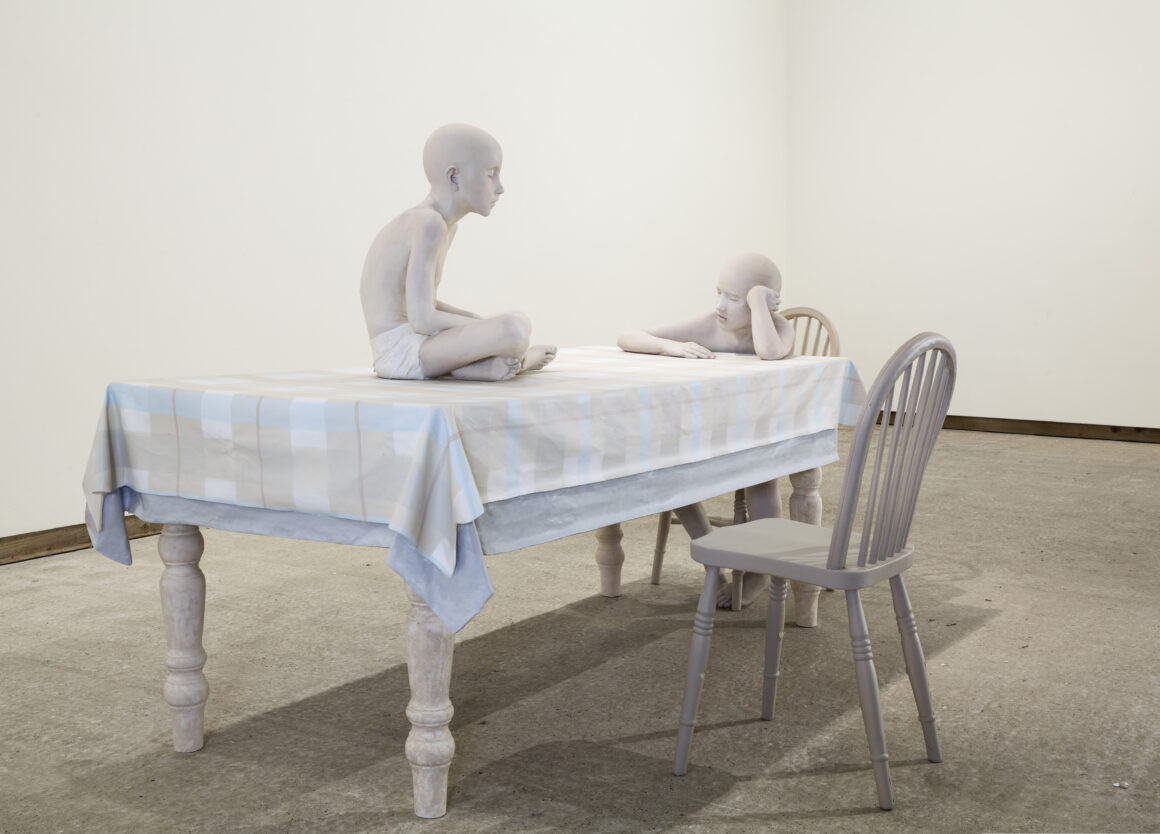
JL: A solo exhibition of your work will be presented at the Ashmolean Museum in Oxford this summer. It will feature new work, developed in response to sculptures in the Ashmolean Cast Gallery. What can you tell us about this show?
DW: The exhibition title, ‘Deep Rooted Things’, is taken from a line in the Yeats poem, The Municipal Gallery Revisited (1939): “My children may find here Deep-rooted things.” The Ashmolean Cast Gallery is quite amazing. It contains ancient Greek and Roman casts that are almost complete. There’s a fascinating collection of athletes that really do still hold the qualities of young men. I took the children to the Ashmolean a lot when they were small, so in a way, it forms part of their upbringing and their learning. One’s fascination, as a mother and as an artist, looking at objects, imbues them, in turn, with fascination.
The exhibition also responds to the Hugh Lane Gallery Collection, looking specifically at the still life painting tradition. The collection contains flower paintings by some of the very first Irish women to have gone to university or art college, many of them studying in the UK or France. Their flower paintings are quite beautiful and quietly radical. There are also some very poignant portraits, including a beautiful one of W.B. Yeats as a boy reading a book, painted by his father, John Butler Yeats, in c.1886.
These artworks will be reproduced in an accompanying publication, alongside writing by Emily LaBarge and from Ashmolean Museum Director, Alexander Sturgis, and Hugh Lane Gallery Director, Barbara Dawson. The show is about combining those institutions and looking at the differences in their collection: one is a world class collection of antiquity; while the other is a more modern national collection containing contemporary works. They employ different languages, but for me, it’s all museology, permeated by the domestic.
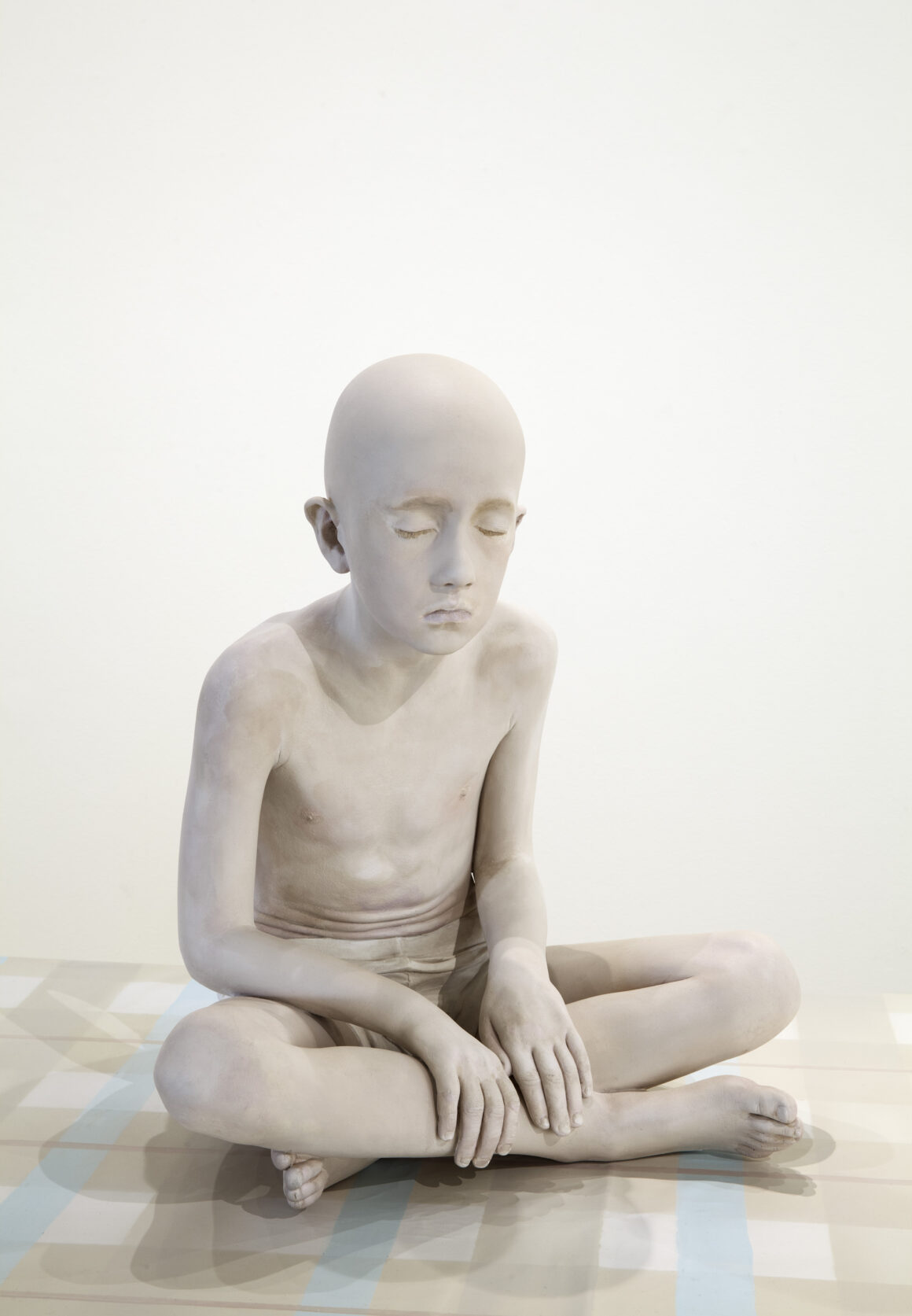
JL: There seems to be the recurring theme of young men, portrayed throughout the ages?
DW: That’s true – young men at a pivotal point in their lives, whether the young athletes in the Ashmolean collection, or my own sons on the cusp of adulthood. Arguably, there were similar pressures for young men in both the classical and contemporary eras. A lot of this subtext is not verbal; however, we know it instinctively. I think that is largely where my work exists – at these kind of thresholds that are universally understood.
‘Ashmolean Now, Daphne Wright: Deep-Rooted Things’ will be presented at the Ashmolean Museum in Oxford from 13 June 2025 to 8 February 2026. The making of new works for this exhibition has been supported by a Visual Art Project Award from The Arts Council of Ireland.
ashmolean.org

